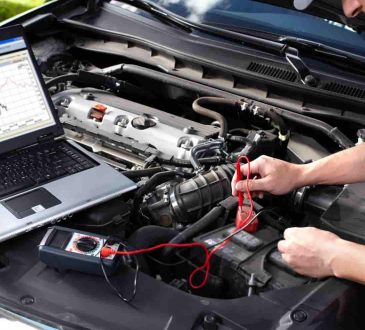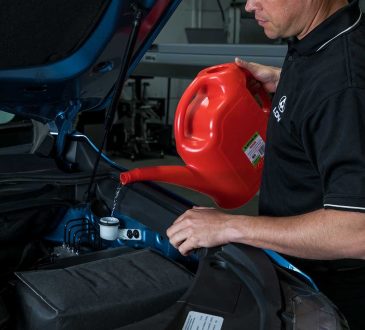Key Takeaways:
- Driving with a well-functioning clutch enhances overall driving experience
- A faulty clutch impacts vehicle’s performance and can cause gear change issues
- Replacing a worn-out clutch improves acceleration, gear changes, and safety
- Clutch replacement requires gathering tools, disassembling the old clutch, and installing the new one
- Troubleshooting challenges during clutch replacement requires identifying potential issues and using tips and tricks
- Proper maintenance can extend the lifespan of a new clutch
- Driving techniques and regular maintenance promote clutch longevity
- Signs indicating the need for clutch adjustment or replacement should not be ignored
1. Understanding the Importance of a Smooth Clutch Transition
Driving a car with a well-functioning clutch can greatly enhance your overall driving experience. The clutch is an essential component of a manual transmission vehicle, responsible for smoothly engaging and disengaging power from the engine to the wheels. It allows for seamless gear changes and ensures smooth transitions between gears.
Why a well-functioning clutch is essential for optimal driving experience
A well-functioning clutch allows for precise control over the vehicle’s acceleration and deceleration. It enables smooth shifting between gears, giving you a comfortable and enjoyable driving experience. A properly functioning clutch ensures that power is transferred efficiently from the engine to the transmission, resulting in optimal performance and fuel efficiency.
The impact of a faulty clutch on your vehicle’s performance
On the other hand, a faulty clutch can significantly impact your vehicle’s performance. A worn-out clutch can cause slipping, which means that the engine’s power is not being fully transferred to the wheels. This can result in poor acceleration, reduced fuel efficiency, and even damage to other components of the transmission system.
In addition to affecting performance, a faulty clutch can also make gear changes difficult and uncomfortable. You may experience grinding or difficulty in engaging gears, causing jerky movements and a less enjoyable driving experience. Ignoring a faulty clutch can lead to further damage, ultimately resulting in a costly and time-consuming repair.
The benefits of replacing your car’s clutch for smooth transitions
Replacing your car’s clutch can bring a range of benefits, including smooth transitions between gears and improved overall driving experience. A new clutch ensures that power delivery is optimized, resulting in better acceleration, smoother gear changes, and increased fuel efficiency.
By replacing a worn-out clutch, you can eliminate slipping, grinding, and other issues associated with a faulty clutch. This not only enhances the performance of your vehicle but also improves safety by providing better control and handling. A smooth clutch transition allows for precise gear changes, reducing the risk of accidents and unnecessary wear and tear on other transmission components.
2. Step-by-Step Guide for Effortless Car Clutch Replacement
Car clutch replacement may seem like a daunting task, but with the right tools and knowledge, it can be a relatively straightforward process. Follow this step-by-step guide to ensure a smooth and successful clutch replacement:
Gathering the necessary tools and equipment
Before starting the clutch replacement process, it’s important to gather all the necessary tools and equipment. This includes a comprehensive clutch replacement kit, which typically includes a new clutch disc, pressure plate, throwout bearing, and alignment tool. Additionally, you will need basic hand tools such as wrenches, sockets, a torque wrench, and a jack to lift the car and provide adequate clearance.
Disassembling the old clutch with expert precision
The next step is to disassemble the old clutch system. Start by disconnecting the negative terminal of the battery to avoid any electrical mishaps. Then, remove the transmission from the engine, following the manufacturer’s instructions. Carefully detach the old clutch components, including the pressure plate, clutch disc, and throwout bearing.
Inspect the flywheel, which is the surface that the clutch disc contacts. If there are any signs of damage or uneven wear, it’s advisable to have it resurfaced or replaced. Clean the flywheel thoroughly to remove any debris or oil that could affect the performance of the new clutch.
Installing the new clutch with ease and accuracy
Once the old clutch components have been removed, it’s time to install the new clutch. Begin by aligning the clutch disc using an alignment tool to ensure proper positioning. Carefully place the pressure plate over the clutch disc and tighten the bolts gradually and evenly in a star pattern to achieve the recommended torque specifications.
Reinstall the transmission onto the engine, making sure to align the input shaft with the clutch disc. Secure the transmission in place and reconnect any electrical and mechanical connections that were disconnected during the disassembly process. Finally, lower the car, reconnect the negative battery terminal, and test the clutch to ensure smooth operation.
3. Troubleshooting Common Clutch Replacement Challenges
While clutch replacement can be a relatively straightforward process, it’s not without its challenges. Here are some common issues that may arise during a clutch replacement and tips for troubleshooting:
Identifying potential issues before starting the replacement process
Before starting the clutch replacement process, it’s essential to identify any potential issues that may affect the installation. Inspect the clutch hydraulic system, including the master cylinder and slave cylinder, for any signs of leaks or damage. Replace any faulty or worn-out components to ensure optimal performance after the clutch replacement.
Tips and tricks for overcoming obstacles during the clutch replacement
During the clutch replacement, you may encounter obstacles such as rusted bolts, stubborn components, or difficulties in aligning the clutch disc. To overcome these challenges, it’s important to use penetrating oil to loosen rusted bolts and ensure all components are clean and free of debris. Take your time during the installation process and consult the vehicle’s manual or online resources for guidance.
Preventing future clutch problems through proper maintenance
Once the clutch replacement is complete, it’s crucial to practice proper maintenance to prevent future clutch problems. Avoid excessive slipping of the clutch by ensuring smooth transitions between gears and avoiding unnecessary revving of the engine. Regularly check the clutch fluid level and inspect for any signs of leakage. If you notice any abnormal clutch behavior, such as slipping or difficulty in engaging gears, address the issue promptly to prevent further damage.
4. Expert Advice for Extending the Lifespan of Your New Clutch
After investing time and effort into replacing your car’s clutch, it’s important to take the necessary steps to extend its lifespan. Here are some expert tips for ensuring the longevity of your new clutch:
Driving techniques that promote a longer clutch lifespan
Adopting proper driving techniques can greatly contribute to a longer clutch lifespan. Avoid riding the clutch, which involves keeping your foot on the clutch pedal while driving. This can cause unnecessary wear and tear on the clutch components. Instead, utilize the clutch pedal only when shifting gears and fully depress it to ensure a complete disengagement of power.
Additionally, avoid excessive revving of the engine when starting from a stop. This places unnecessary strain on the clutch and can lead to premature wear. Instead, start smoothly and gradually release the clutch pedal while applying gentle pressure on the accelerator.
Regular maintenance practices for optimal clutch performance
Regular maintenance is essential for optimal clutch performance. This includes checking the clutch hydraulic system for any leaks or damage and ensuring the clutch fluid is at the correct level. Additionally, periodically inspect the clutch for any signs of wear, such as a worn-out clutch disc or pressure plate. Addressing any issues promptly can prevent further damage and extend the lifespan of your clutch.
Signs indicating the need for clutch adjustment or replacement
It’s important to be aware of the signs indicating the need for clutch adjustment or replacement. If you notice slipping, grinding, difficulty in engaging gears, or a burning smell while using the clutch, these are potential signs of a clutch problem. Ignoring these signs can lead to further clutch damage and increased repair costs. If you experience any of these symptoms, it’s advisable to have your clutch inspected by a professional to determine the appropriate course of action.
By following these expert tips and maintaining your new clutch properly, you can maximize its lifespan and enjoy smooth transitions for years to come.




